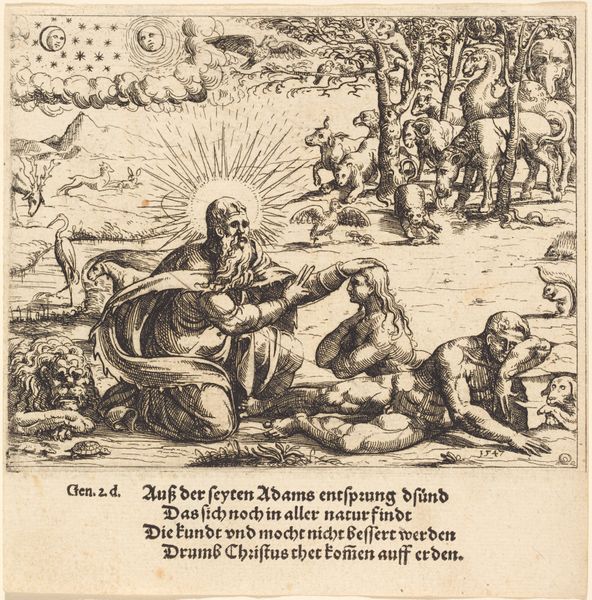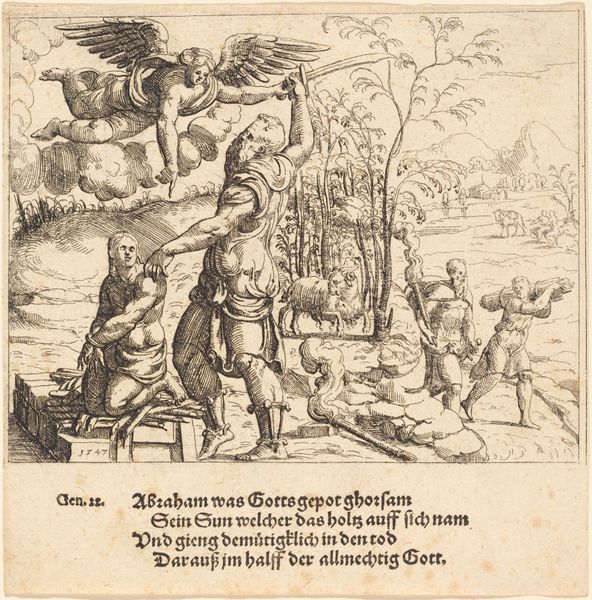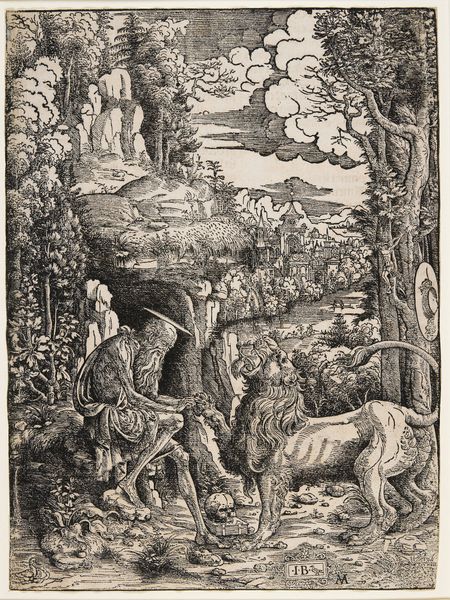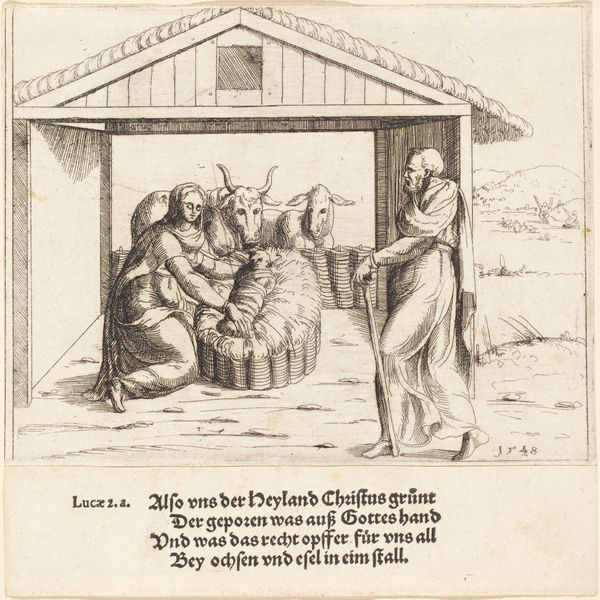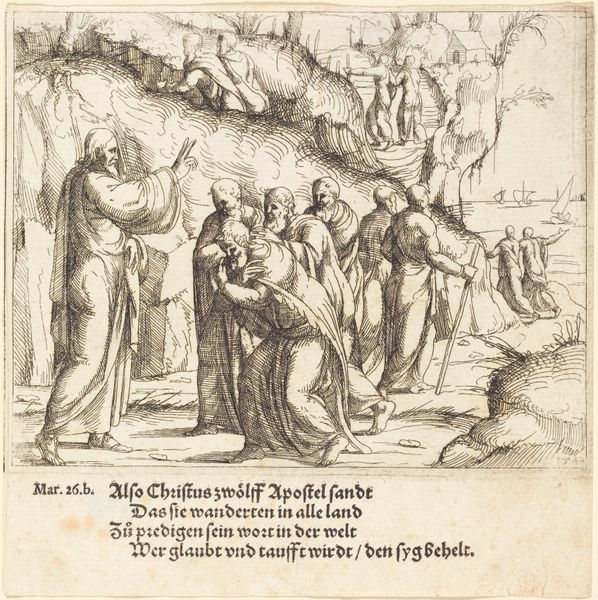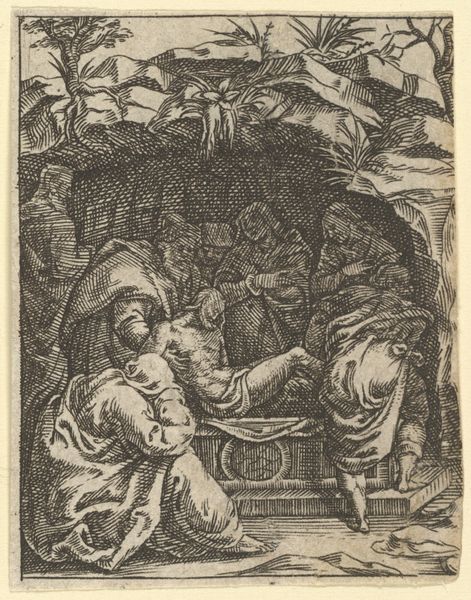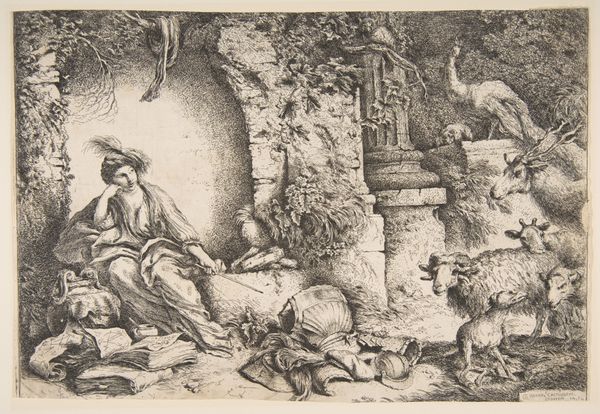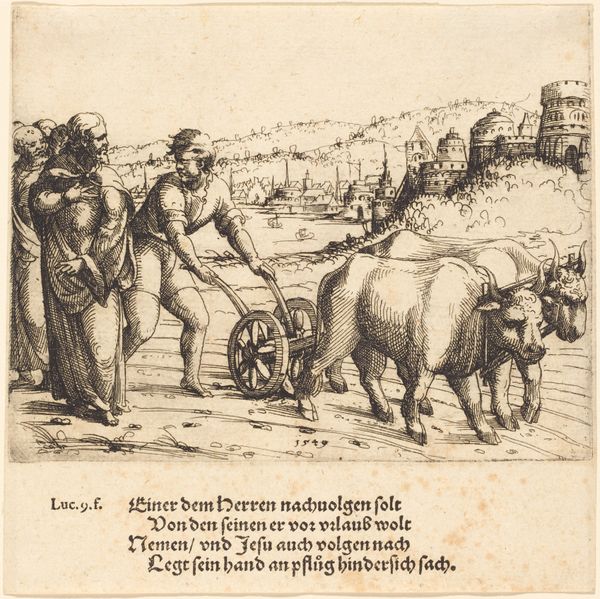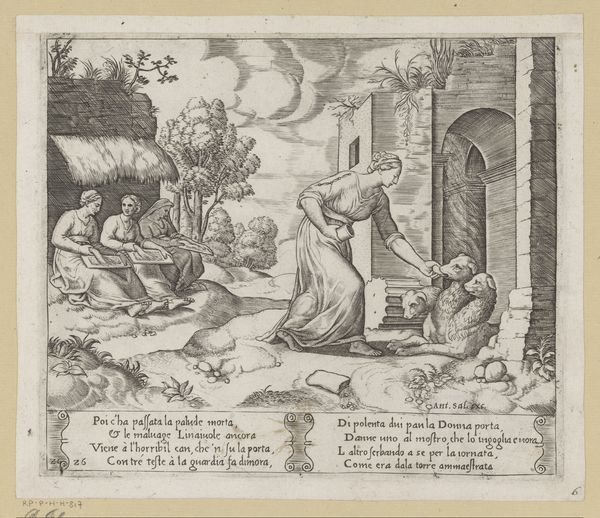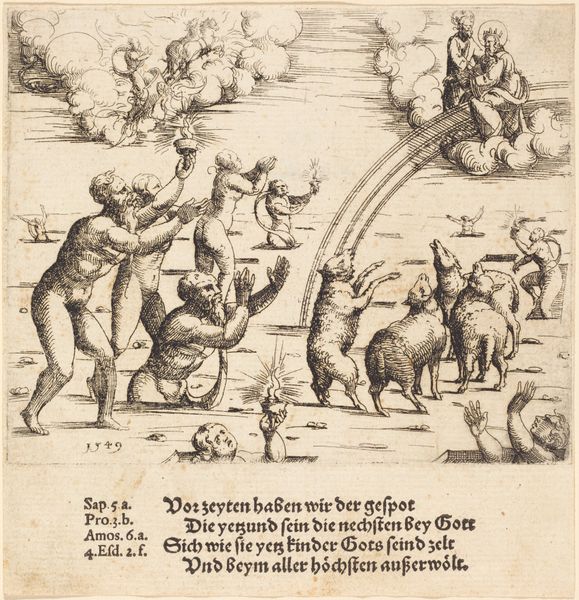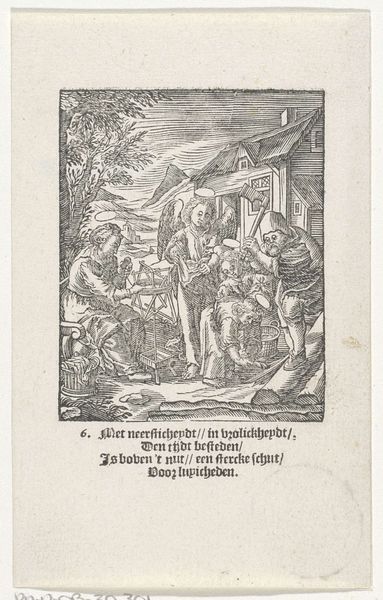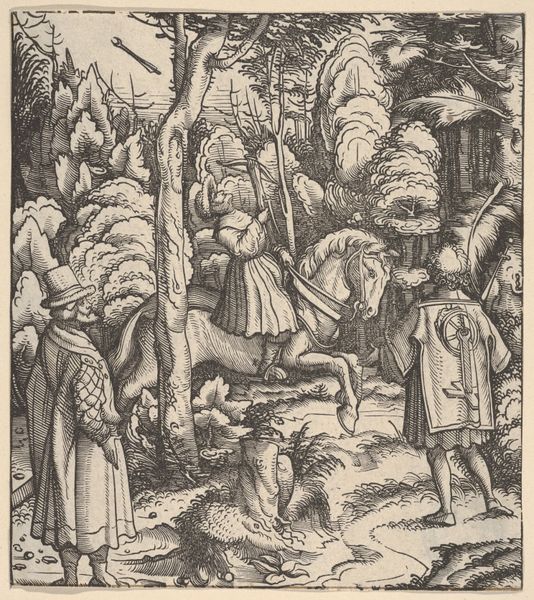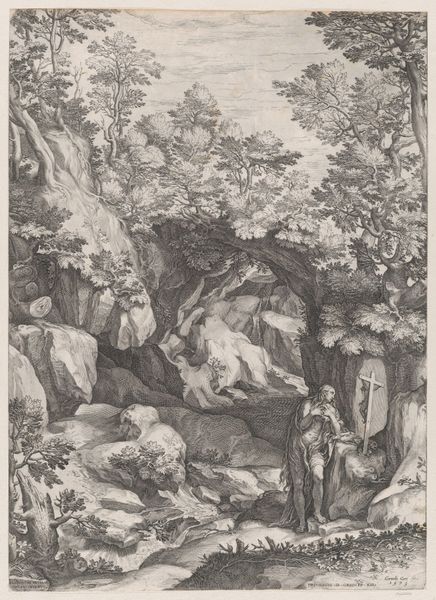
print, engraving
#
narrative-art
# print
#
figuration
#
line
#
history-painting
#
northern-renaissance
#
engraving
Copyright: National Gallery of Art: CC0 1.0
Augustin Hirschvogel made this print, Daniel in the Lions’ Den, using etching, sometime in the mid-16th century. It's a process that relies on metal, acid, and skilled labor. Etching begins with a metal plate covered in a waxy, acid-resistant ground. The artist then scratches into this ground, exposing the metal. When the plate is submerged in acid, it bites into the exposed lines, creating the image. This contrasts with engraving, where the artist cuts directly into the metal. The network of fine lines created by the etching process defines the image. Hirschvogel manipulates these lines to create the details in the bodies of Daniel and the Lions. This intaglio printmaking method allowed for the relatively efficient production of images. By the sixteenth century, printmaking played a crucial role in disseminating information and artistic ideas across Europe, contributing to a burgeoning visual culture shaped by new technologies of reproduction. The materiality of the print reminds us that art is always tied to production, labor, and the social contexts in which it is made.
Comments
No comments
Be the first to comment and join the conversation on the ultimate creative platform.
